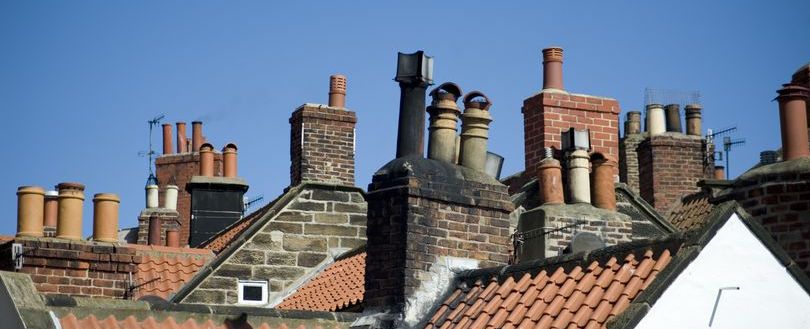
Devon and Somerset Reports the Highest Number of Chimney Fires in England
Like it? Share it!
03 September 2025
New government fire and rescue service data, analysed by HETAS for Chimney Fire Safety Week (CFSW), shows that Devon and Somerset Fire and Rescue Service dealt with 181 chimney fires in the past year, the highest figure across all counties in England.
Dorset and Wiltshire came next with a combined total of 113 incidents, followed by Hereford and Worcester with 95, North Yorkshire with 90, and Norfolk with 86. These figures cover the period from April 2024 to March 2025.
In total, England recorded 2,019 chimney fires during this time, a 5% drop compared to the previous year, representing 0.33% of all fires nationwide. While numbers are falling, the rise in stove use remains notable, with over 1.5 million stoves now installed across more than 60% of UK households.
The government statistics, reviewed by HETAS as part of its annual CFSW campaign, reflect findings from the organisation’s own research into consumer burning habits. CFSW is a national awareness initiative, run in partnership with the government’s Fire Kills campaign, fire and rescue services, and industry partners, aiming to highlight key safety messages for consumers.
Causes and maintenance concerns
HETAS’ survey of 88 counties across the UK highlights worrying trends. Almost 1 in 10 wood-burning stove owners admitted leaving it two or more years before sweeping their chimney, or never having it swept. Meanwhile, one fifth of respondents said they had never serviced their appliance, or were unsure if they had.
Calvin May, Head of Technical & Certification at HETAS, commented:
“Our latest data reveals some interesting insights into the potential causes of these chimney fires, reiterating the need for our annual awareness campaign; we even discovered that some stove owners weren’t aware their appliance needs regular, ongoing maintenance. Regularly servicing your solid fuel appliance and sweeping your chimney is essential to help reduce these annual chimney fire figures even further.
No matter what type of chimney you have or whether it is lined or not, wood-burning stove owners are advised by industry to have their chimneys swept twice a year if they burn wood, and at least once every 12 months if using smokeless fuels. Appliances should be installed by a competent professional and serviced annually, using a HETAS registered servicing engineer for continued safety and compliance.
If a chimney isn’t regularly swept then a sticky, tar-like substance called creosote builds up on the inner walls of the chimney flue – building much more rapidly if the appliance is poorly maintained or the wood isn’t properly seasoned – which can ignite and cause a chimney fire to rapidly spread.”
Fire safety advice
Jon Quinn, Chair of the National Fire Chiefs Council’s Home Safety Committee, added:
“Chimney Fire Safety Week is an important reminder that regular sweeping and maintenance are essential in reducing the risk of fire and carbon monoxide poisoning.
The National Fire Chiefs Council also urge households to fit and test smoke alarms as they provide early warning of a fire and save lives. We also recommend installing a carbon monoxide alarm to alert you to poisonous leaks. Smoke and Carbon monoxide alarms should be tested at least once a month to make sure they are working. By taking these simple steps, families can stay warm and safe as we move into the colder months.”
Dr Nicki Harvey, founder of West Midlands-based chimney and stove service company Dr Sweep, who previously suffered from carbon monoxide poisoning caused by a faulty gas fire, reinforced this message:
“It’s so important to get your chimney and your appliance checked and swept regularly, and to test your smoke and CO alarm. By doing so, the stove will work better and more efficiently, it will be cleaner, and most importantly, it will be safer for you and your family.
An experienced sweep can offer advice on how best to burn fuel or to use your stove controls. They can also spot and fix any issues early on, giving you peace of mind when using and enjoying your stove.”
Fuel choices and safety
The HETAS research also revealed that over 1 in 10 consumers either never check if their fuel is certified ‘Ready to Burn’ or only check occasionally. Around one in five reported sourcing their own wood instead of purchasing it, with a small proportion (4%) highlighting cost-of-living concerns.
Calvin May continued:
“With the recent energy price cap increase announced by Ofgem, homeowners are continuing to look for cost-effective ways to heat their homes, but when buying fuel for your stove you must remember to prioritise the safety of your home.
In England, there are strict government regulations that any wood sold in volumes under 2m³ must be certified as ‘Ready to Burn’, meaning it has a moisture content of 20% or less and that Manufactured Solid Fuels contain less than 2% sulphur content.
Both are critical to ensure that these fuels burn efficiently, safely and cleanly, both for the environment and stove users. This not only benefits the lifespan of your appliance but also reduces the risk of chimney fires when burned in a sufficiently maintained stove and alongside a regularly swept chimney.”
View the source.
Our eNews provides regular insight into industry trends, news headlines, and product and service information. For more articles like this Subscribe to our enews.
Related news
Related resources
-
Passenger Service Vehicle - Guidance Note
05 September 2023
